They're baaaaaack! Spring 2013 marks 17 years since the last emergence of Brood II cicadas along the East coast of the U.S. Sometime between mid April and late May, millions of cicadas from Brood II are expected to emerge up the East coast. If they follow their parents' emergence in 1996 parts of Connecticut, Maryland, North Carolina, New Jersey, New York, Pennsylvania and Virginia should all see vast numbers of these roughly 3 inch long bugs.

Brood II Cicadas to Swarm East Coast Spring 2013
by LizM
The East coast of the U.S., from North Carolina up into New York, is set to be swarmed by millions of Brood II cicadas in the Spring of 2013.
What are Cicada Broods
There are several types of cicadas in the U.S. Some arrive every year, others arrive every year but with huge population bursts occasionally, and others make a spectacular emergence after long hibernation cycles underground. These long cycle cicadas are called periodical cicadas and most have 13 or 17 year cycles. These long cycle, periodical, cicadas are the ones we number with brood designations. There are several different broods in the United States but most mapping data is based on very old maps (early 1900s). A few broods have apparently died out but there are mapping projects underway to attempt to map current distributions and schedules of remaining broods.
Cicada Broods in the U.S.
| Brood # | Years | States |
| I | 17 | VA, WV, TN |
| II | 17 | CT, MD, NC, NJ, NY, PA, VA |
| III | 17 | IA, IL, MO |
| IV | 17 | IA, KS, MO, NE, OK, TX |
| V | 17 | MD, OH, PA, VA, WV |
| VI | 17 | GA, NC, SC |
| VII | 17 | NY |
| VIII | 17 | OH, PA, WV |
| IX | 17 | NC, VA, WV |
| X | 17 | DE, GA, IL, IN, KY, MD, MI, NC, NJ, NY, OH, PA, TN, VA, WV |
| XIII | 17 | IA, IL, IN, WI |
| XIV | 17 | KY, GA, IN, MA, MD, NC, NJ, NY, OH, PA, TN, VA, WV |
| XIX | 13 | AL, AR, GA, IN, IL, KY, LA, MD, MO, MS, NC, OK, SC, TN, VA |
| XXII | 13 | LA, MS |
| XXII | 13 | AR, IL, IN, KY, LA, MO, MS, TN |
Data via: Cicadamania.com and Cicada Central
Brood II Identification
Almost all cicadas look very much alike in structure. However, their colors (along with when you see them) are an easy way to identify different broods.
For Brood II (and almost all 17 year varieties) look for black bodies, red eyes, orange wings, and orange legs. 17 year cicadas are NEVER GREEN.
What is that Sound?
The cicada song is a sound of comfort for some, for others it is an incessant drone that threatens to drive you mad.
Click here to hear a sample of a cicada song.
Cicada song varies somewhat by brood and species of cicada but all are a droning type of sound. When multiplied by millions of insects all singing at once the sound drowns out almost all other nighttime sounds.
Finding Cicadas
During an emergence you'll likely find the evidence of cicadas easier than live cicadas. Cicadas emerge from the ground in nymph form, climb trees, and then shed their shell to emerge in adult form. Trees will be dotted, and in some cases covered, with these small brown husks that the adult cicadas have left behind.
Adult cicadas are easier to find at night where they perch in trees to sing for a mate. Take a flashlight and check trees and shrubs, you'll most likely find them easily during a large emergence.
You might also like
Cicada Nature StudySpend the hot days of summer observing the cicada and its exoskeleton which i...
Collecting Seashells: Types of ShellsA look at some seashells you may see on Florida beaches with photos of my own...
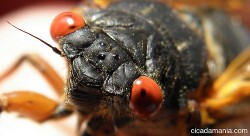

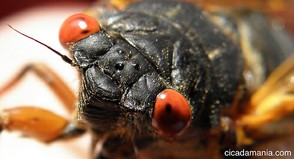






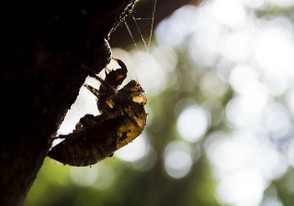





 Quick Leveling Guide for Dawn of the Dragonson 03/28/2014
Quick Leveling Guide for Dawn of the Dragonson 03/28/2014
 ArcSoft Portrait+ Review with Discount Codeon 02/11/2014
ArcSoft Portrait+ Review with Discount Codeon 02/11/2014
 How to Stay Cool in a Heat Waveon 07/17/2013
How to Stay Cool in a Heat Waveon 07/17/2013
 Lowepro Transit Sling 250AW Reviewon 07/05/2013
Lowepro Transit Sling 250AW Reviewon 07/05/2013
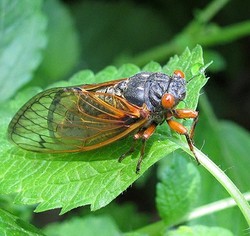
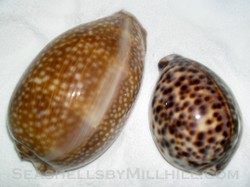
Comments
Yes they are coming, I can just hear that roar. This is an amazing scientific historical event. I was fascinated with this when younger, kids get so much from this experience. You never know how it may influence their love or disinterest in science. Great article. :)K